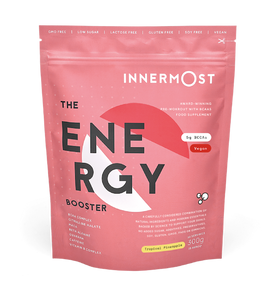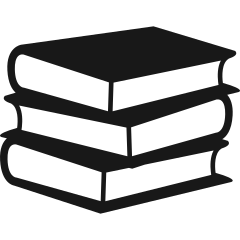Let’s talk strength training, where beyond pumping iron the pursuit of overall wellbeing takes centre stage - or should we say platform. In this article, we'll explore the multifaceted benefits of adding strength training to your weekly routine, and just how you can do so effectively.
What is strength training?
Strength training, also known as resistance training or weight training, is a form of physical exercise focused on improving muscular strength and endurance through resistance or weights. The primary goal of strength training is to enhance the ability of muscles to generate force, promoting increased muscle mass, improved tone, and overall functional fitness. It works by inducing controlled stress on our muscles to prompt physiological adaptations. When external resistance, such as weights or resistance bands, is applied, it creates tension within the muscle fibres and microscopic tears. During recovery, the body initiates repair processes, forming new proteins and muscle fibres to rebuild these tears and adapt the muscles. This results in increased muscle mass, strength, and endurance over time.
What equipment do you need for strength training?
Strength training can use a whole host of various equipment, including free weights, resistance bands, or weight machines, and typically involves performing sets and repetitions of specific exercises.

Can Anyone Strength train?
Strength training is an inclusive and adaptable fitness option suitable for individuals of all ages and backgrounds.
Regardless of gender or prior fitness experience, everyone can benefit from incorporating strength exercises into their routines. From beginners focusing on form to advanced lifters pursuing various techniques, strength training accommodates diverse fitness goals.
The supportive community environment, both in-person and online, ensures an inclusive space for sharing experiences and motivation. Ultimately, strength training goes beyond building muscles; it fosters strength, confidence, and well-being for everyone.
What are the benefits of strength training?
The Mental Health Boost
Strength training is not just about physical gains; it's a holistic approach to health that extends to mental well-being. Engaging in regular weightlifting sessions has been linked to reduced symptoms of anxiety and depression [1]. The release of endorphins during exercise acts as a natural mood enhancer, helping to alleviate stress and improve overall mental clarity [2].
Easier Everyday:
It may seem like stating the obvious, but beyond the broader spectrum of benefits, the fundamental advantage of strength training lies in … you guessed it … enhanced physical strength! As you progressively challenge your muscles with resistance, your muscles become more efficient at generating force, allowing you to lift heavier weights and perform more challenging exercises [3].
This improvement in strength not only empowers you within the confines of the gym, but also translates into a newfound capability to tackle everyday tasks with greater ease and confidence.
Increased Metabolism:
Strength training isn't just about building muscle; it's a metabolic powerhouse. As you engage in resistance exercises, your body works hard to repair and build muscle tissue. This process consumes energy, boosting your resting metabolic rate. Over time, this heightened metabolism becomes an ally in maintaining a healthy weight and supporting fat loss goals [4].
Improved Posture, Joint Health & Bone Density:
Strengthening the muscles that support your spine and shoulders helps maintain an upright posture, reducing the risk of chronic back pain [5]. Additionally, targeted exercises can enhance the stability of your joints, contributing to overall joint health and flexibility [6]. Weight-bearing exercises stimulate bone growth and remodelling, making your bones denser and more resistant to fractures [7]. This is particularly significant as you age, helping to combat conditions like osteoporosis and promoting long-term skeletal health.
Enhanced Insulin Sensitivity:
Regular strength training has been linked to improved insulin sensitivity [8]. This means your body becomes more efficient at utilising insulin to regulate blood sugar levels. This is not only beneficial for individuals with or at risk of diabetes but also contributes to overall metabolic health.
Better Sleep Quality:
Strength training could also be a natural remedy for those struggling with sleep issues. Engaging in regular physical activity, including strength training, has been shown to improve sleep quality for some [9]. The exertion during workouts, coupled with the positive impact on stress levels, promotes more restful and rejuvenating sleep.

How to Strength Train like a Pro
Strength training for beginners:
Start with the basics – master proper form and use lighter weights. Focus on fundamental exercises like squats, deadlifts, and bench presses to build a strong foundation. Don’t be afraid to ask your local personal trainer for help (that’s what they are there for!). Equally, if you’re practising at home, recording yourself and watching it back can be a great way to assess your technique - along with getting to grips with your mind to muscle connection, and making sure to feel the burn where you should!
Begin by doing 12 reps of each exercise and go through the routine for 3 sets, taking a 30-second break between each set. Aim for a weight that gives you a good challenge, making the last two reps of every set extra tough - you should be too tired to try a 13th repTop of Form! This initial phase will trigger neuromuscular adaptations, enhancing your body's ability to recruit muscle fibres efficiently for strength-based tasks.
Level Up:
When you’ve got the hang of it, it’s time to intensify your routine. Gradually increase the weight, reps, or sets, and add variations of different exercises to keep challenging your muscles – this is called progressive overload. Consider split routines, which target specific muscle groups on different days. This will allow for more targeted training and effective recovery.
A common split routine divides training sessions into upper and lower body workouts. On upper body days, exercises concentrate on muscles like the chest, back, shoulders, and arms. Lower body sessions then emphasise exercises targeting the legs and glutes. Another approach is the push-pull split, where one day is dedicated to pushing movements (e.g., chest and triceps), and the next focuses on pulling movements (e.g., back and biceps).
Advanced Strength Training:
Now in the big leagues, strategies such as periodization come into play. Periodization involves cycling through different phases of intensity and volume to prevent plateaus and optimise performance [10].
Advanced lifters may experiment with techniques like drop sets and supersets to induce greater muscle fatigue and stimulate further growth. Recovery becomes paramount at this stage, so listen to your body, prioritise recovery, and make sure to fuel yourself properly for optimal results.
Summary
In the world of strength training, we've discovered its broad benefits, going beyond muscles to mental well-being, enhanced functionality, metabolism, joint health, and better sleep. Progressing through your strength training journey involves mastering form, intensifying routines, and strategic approaches. Whether you're starting or seasoned, the key is personalisation, consistency, and recovery. Building strength isn't just about weights; it's about a healthier, resilient you. So, grab those weights, start your journey, and watch transformative benefits unfold!
[1] https://www.ncbi.nlm.nih.gov/pmc/articles/PMC6137526/
[2] https://www.researchgate.net/profile/Eric-Hall-4/publication/325652029_The_acute_effects_of_resistance_exercise_on_affect_anxiety_and_mood_-_practical_implications_for_designing_resistance_training_programs/links/5b1ee1ab458515270fc46b0c/The-acute-effects-of-resistance-exercise-on-affect-anxiety-and-mood-practical-implications-for-designing-resistance-training-programs.pdf
[3] https://www.ncbi.nlm.nih.gov/pmc/articles/PMC2892859/
[4] https://pure.bond.edu.au/ws/portalfiles/portal/36134364/AM_The_effect_of_exercise_interventions_on_resting_metabolic_rate.pdf
[5] https://bmcsportsscimedrehabil.biomedcentral.com/articles/10.1186/s13102-020-00181-0
[6] https://journals.sagepub.com/doi/10.1177/0269215515610039
[7] https://www.ncbi.nlm.nih.gov/pmc/articles/PMC6279907/
[8] https://www.bewegenismedicijn.nl/files/downloads/tresierras_et_al._2009_-_rt_in_the_treatment_of_diabetes_and_obesity.pdf
[9] https://www.ncbi.nlm.nih.gov/pmc/articles/PMC4341978/
[10] https://www.ncbi.nlm.nih.gov/pmc/articles/PMC3438871/#:~:text=Periodization%20is%20the%20planned%20manipulation,the%20onset%20of%20overtraining%20syndrome























